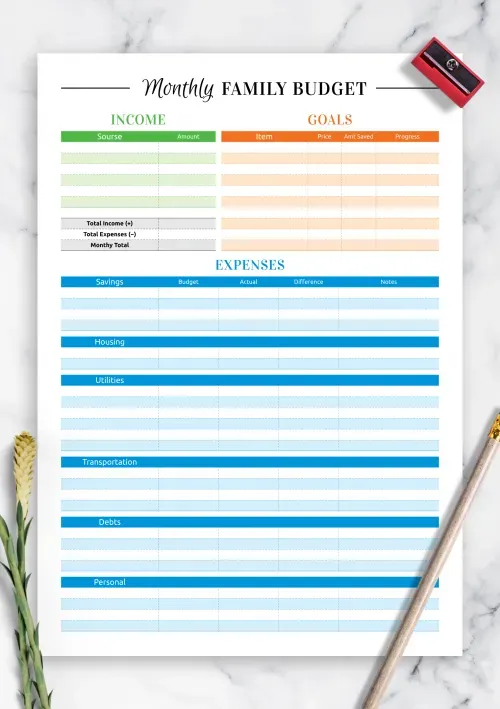Smart Finance for Beginners is your friendly roadmap to making money work for you, not a get-rich-quick fantasy. In this guide, you will discover practical steps for budgeting for beginners, debt reduction tips, and personal finance basics that stay realistic. These ideas are designed to help you start budgeting today and build a simple system you can maintain month after month. By focusing on small, steady actions, you will grow wealth over time while keeping risk and stress low. The strategy is practical, beginner-friendly, and scalable as your income and goals evolve.
From a beginner’s perspective, it helps to frame money management as a skills-based journey rather than a rigid set of rules. Think of budgeting as a roadmap for spending, and debt reduction as a plan to reclaim future flexibility, using fundamentals of personal finance to guide decisions. Rather than chasing quick wins, focus on building a sustainable routine: automate savings, monitor expenses, and learn simple investing concepts. Long-term wealth grows when you align daily choices with clear goals, embrace gradual habit formation, and stay curious about tax-advantaged accounts and risk management. This approach offers practical, scalable steps for anyone starting out and seeking steady progress toward financial security. If you are unsure where to start, consider a reputable finance course or a local workshop for hands-on support.
Smart Finance for Beginners: Start Budgeting Today with a Simple, Sustainable Plan
Smart Finance for Beginners is not about getting rich quickly. It’s about creating a repeatable budgeting system that fits real life and supports consistent progress. By focusing on budgeting for beginners and mastering personal finance basics, you can turn vague intentions into clear monthly actions that accumulate over time.
To start budgeting today, begin by defining your net income—every dollar you receive after taxes. List fixed expenses such as rent or loan payments, then map variable costs like groceries and entertainment. A practical rule of thumb is to allocate about 50% of income to needs, 20% to savings and debt repayment, and 30% to wants, adjusting as your situation changes. Build a small emergency fund first (for example, $500–$1,000) and aim to grow it to 3–6 months of essential expenses.
Choose a beginner-friendly approach—zero-based budgeting or an envelope-style plan—and use a tool you’ll actually stick with, such as a simple spreadsheet or a budgeting app. The important thing is consistency: review your budget weekly, adjust as life changes, and celebrate small wins along the way. Integrating budgeting for beginners and personal finance basics into your routine helps turn intention into action.
Grow Wealth Over Time: Practical Debt Reduction Tips and Personal Finance Basics
Grow Wealth Over Time begins with a solid budget and disciplined debt reduction. Once you reduce debt, apply debt reduction tips to free up cash for savings and investing. Prioritize high-interest balances (avalanche) or start with the smallest balance (snowball), and automate payments to stay on track and avoid penalties.
Let your money work through automated saving and diversified investing. Start with modest, automatic transfers to a low-cost index fund or retirement account, and increase contributions as income allows. Even small, regular investments can compound over years, turning steady discipline into meaningful growth and helping you grow wealth over time.
Keep momentum by setting concrete milestones and reviewing them regularly. A practical 30-60-90 day plan can translate strategy into action, while ongoing attention to personal finance basics helps you adapt to life changes and ensure consistent growth.
Frequently Asked Questions
What is Smart Finance for Beginners, and how can budgeting for beginners help me build a solid financial system?
Smart Finance for Beginners focuses on building a solid, repeatable money system, not a quick windfall. It starts with budgeting for beginners: define take-home pay, track expenses, set priorities (needs, debt, savings, wants), and build an emergency fund. Use a simple method like zero-based budgeting or envelopes and review your budget weekly. This aligns with personal finance basics and, when practiced consistently, helps you grow wealth over time.
What practical debt reduction tips does Smart Finance for Beginners offer to help start budgeting today and grow wealth over time?
Smart Finance for Beginners offers practical debt reduction tips you can start today. List all debts with balances and rates, then pick a plan (avalanche or snowball). Prioritize high-interest debt, negotiate rates when possible, automate payments, and set a realistic monthly target for extra payments. This debt-reduction habit frees cash for savings and investing, helping you grow wealth over time.
| Section | Key Points |
|---|---|
| Introduction | Not about getting rich quickly; focus on a solid, repeatable money system. Practical steps to build a budget, cut debt, and grow wealth over time. Designed to be clear, actionable, and sustainable for beginners or those returning after a setback. By keeping finances simple and taking consistent actions, small, steady efforts can transform money mindset and produce meaningful results. |
| Why Smart Finance for Beginners Matters | Money often feels overwhelming, but personal finance basics are about choices, routines, and patience. A beginner-friendly approach to budgeting, debt management, and wealth-building is accessible and scalable as your situation improves. You don’t need perfect math or perfect timing—just commitment to steady progress. |
| Step 1: Build a Budget — The Foundation of Smart Finance for Beginners | A budget is a spending plan, not a restriction. It reveals where every dollar goes and highlights opportunities to save, invest, and grow wealth. Start with a monthly framework: define net income; track fixed vs. variable expenses; set priorities (needs → debt → savings → wants); build an emergency fund (500–1,000 initially; 3–6 months of essential expenses later); try zero-based or envelope budgeting; use a simple tool (spreadsheet or budgeting app); review weekly and adjust as life changes; integrate keywords budgeting for beginners and personal finance basics into habit-building. |
| Step 2: Cut Debt — Practical Debt Reduction Tips for Momentum | List all debts and create a repayment plan (avalanche vs. snowball). Prioritize high-interest debt. Negotiate rates or terms if possible (refinance, consolidate, balance transfers). Automate payments to stay on track and reduce temptation. Build a debt-reduction habit with a monthly target (e.g., extra $50–$150). Small, consistent actions accumulate and reduce debt over time. The concept of debt reduction tips emphasizes turning debt management into a positive habit. |
| Step 3: Grow Wealth Over Time — Turning Wins into Lasting Prosperity | Wealth growth relies on steady, disciplined actions that compound. Build an automatic savings habit; diversify investing (tax-advantaged accounts, low-cost index funds) with a simple, broad-market approach. Protect wealth with insurance and emergency funds. Increase income through side gigs, upskilling, or career advancement. Revisit goals periodically and adjust budgeting, debt strategy, and investments as life changes. |
| Tools, Habits, and Common Pitfalls | Habits that help: consistency, regular reviews, reminders for bills and savings, celebrating milestones. Simple tools: budget template, financial diary, or a straightforward app with bank syncing. Common pitfalls: overconfidence that you don’t need a budget, neglecting debt payments, ignoring compound growth, chasing ultra-high returns without risk management. |
| Putting It All Together: A 30-60-90 Day Plan | 30 days: Create a budget, list debts, set an emergency fund goal, automate at least one savings transfer, track every expense for a month. 60 days: Implement debt reduction tips, adjust spending categories, explore beginner investing concepts, consider a retirement account. 90 days: Review progress, refine the budget, set longer-term goals (e.g., major purchase, investment portfolio), seek guidance if needed. |
Summary
Smart Finance for Beginners is about building a sustainable money system rather than chasing quick wins. It emphasizes practical, repeatable steps: create a budget, reduce debt with thoughtful strategies, and grow wealth over time through consistent saving and prudent investing. The approach is beginner-friendly, focusing on clarity, habit formation, and steady progress. By tracking income and expenses, prioritizing needs, automating savings and debt payments, and gradually expanding investments, beginners can build financial security. The guide also highlights common pitfalls, practical tools, and a straightforward 30-60-90 day plan to make personal finance accessible and scalable for anyone starting their money-management journey.




